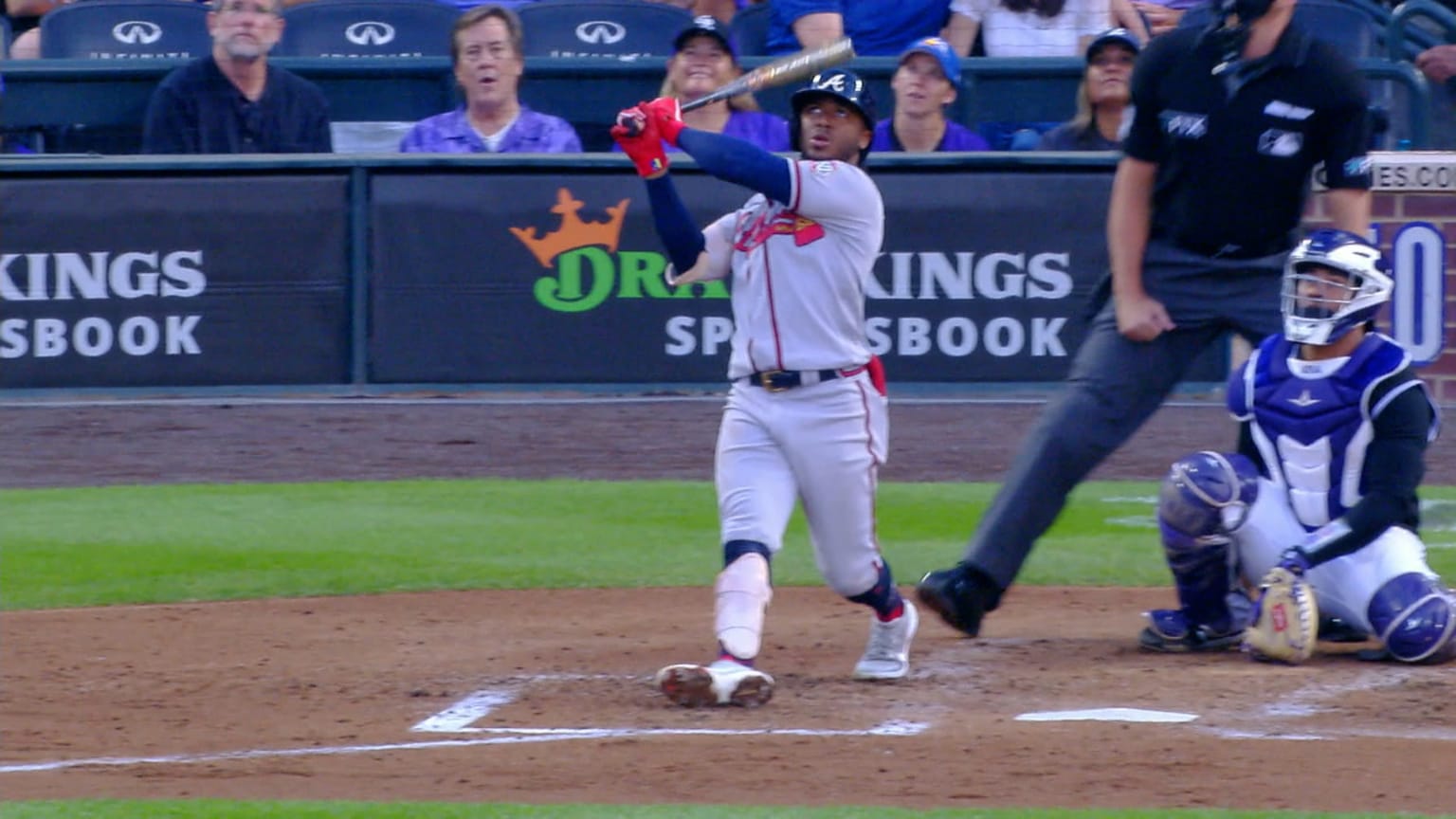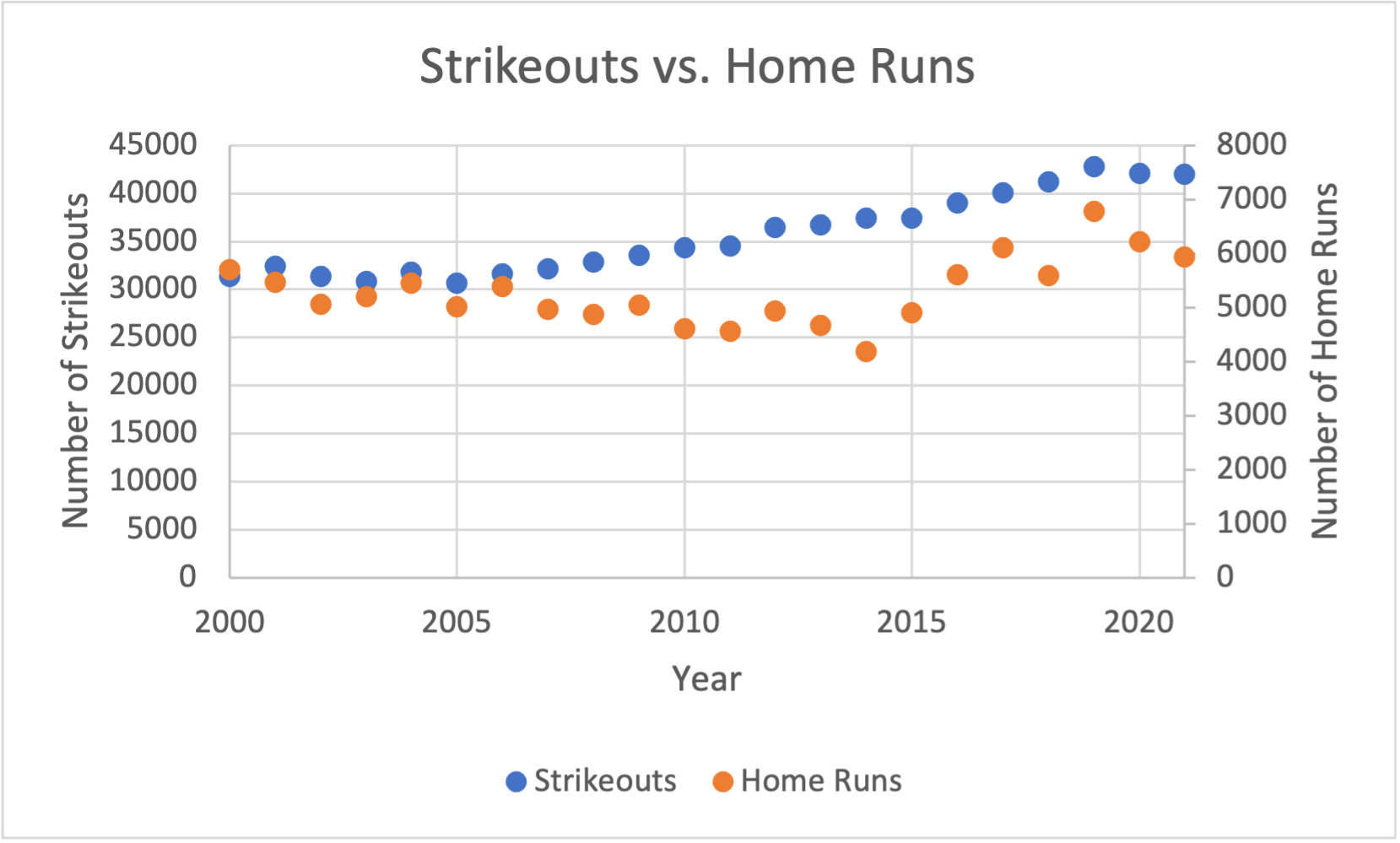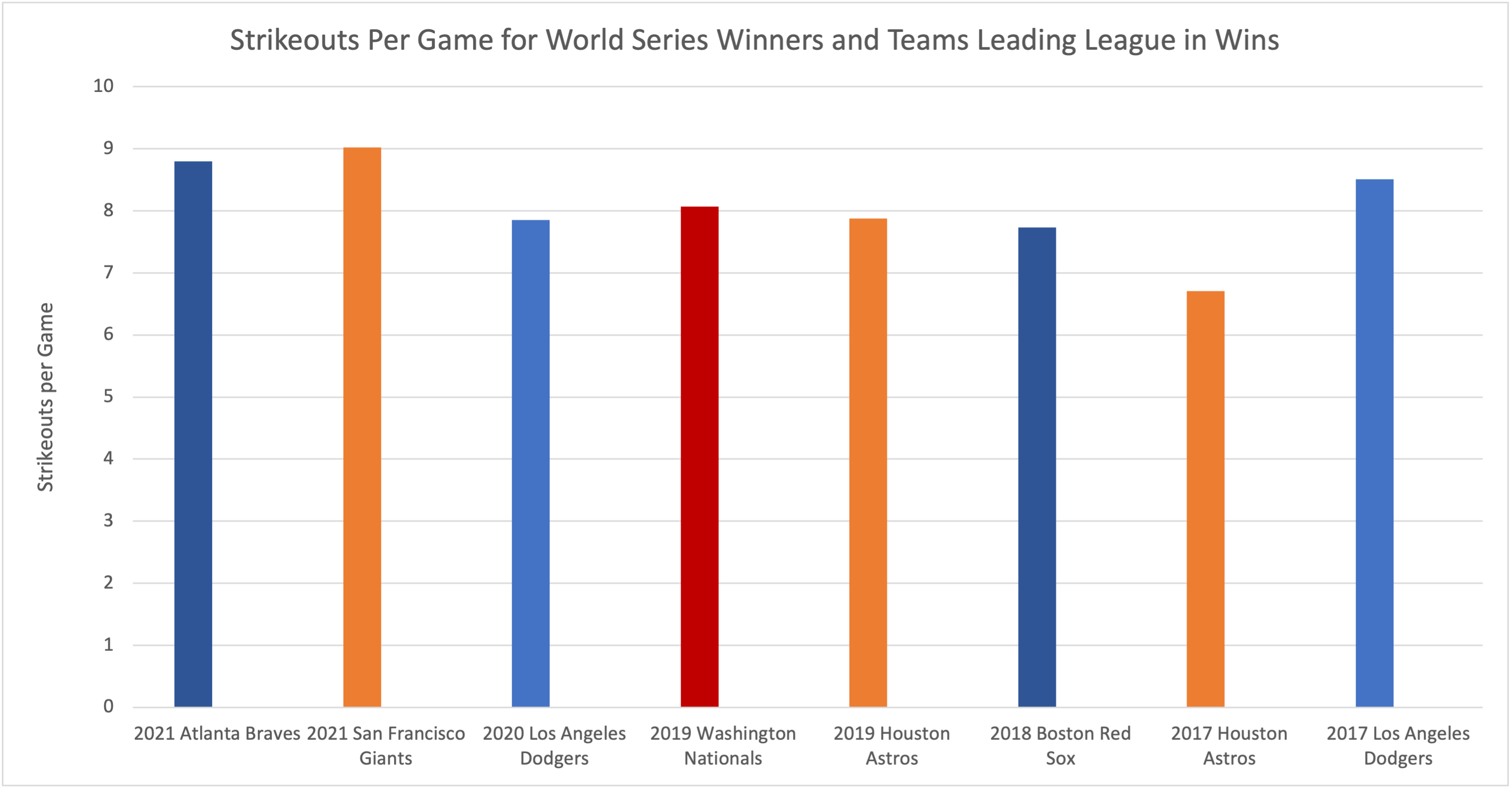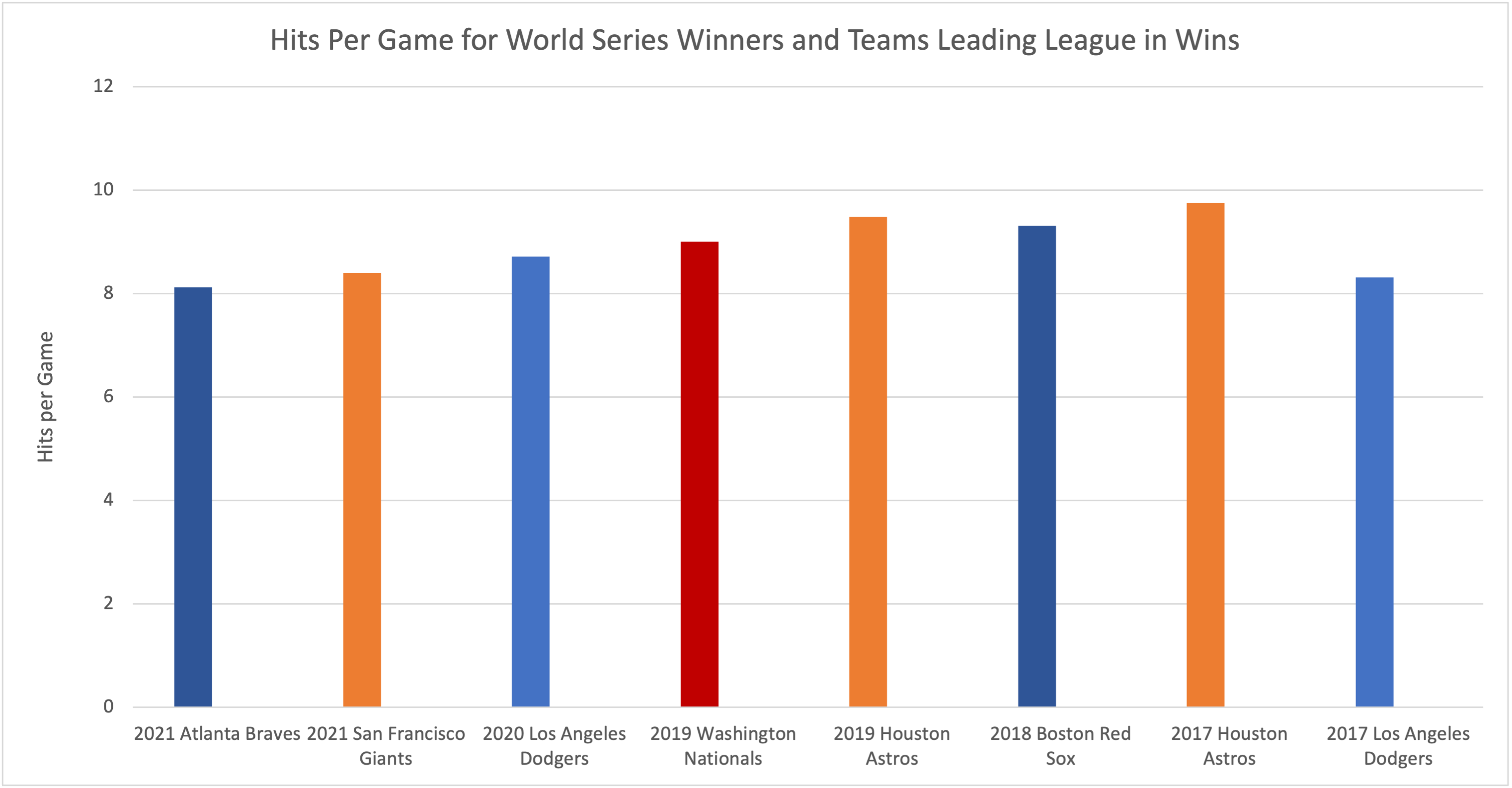Correlating Strikeouts and Hits with Success
By Ryan Idnani | May 18, 2022

The old school philosophy was always that “when you put the ball in play good things happen.”
However, recently, as Major League Baseball has shifted more towards a home run league, many players and teams have been okay with increasing the number of strikeouts that players incur as long as it comes with hitting more home runs. The number of strikeouts increased significantly since 2000, peaking in 2019, with the home run total in each season following a similar pattern with the greatest increase from the 2014 to 2019 season. (The 2020 season statistics were extrapolated through an entire 162 game season.) Has this new school of thought given way to this philosophy?

Last season, when the Atlanta Braves won the World Series, they struck out 9.03 times per game (11th most) and the team with the best record in baseball, the San Francisco Giants, struck out 9.02 times per game (9th most). Two years ago, the Los Angeles Dodgers had the best record and won the World Series, but struck out only 7.85 times per contest (4th least). The year before that, the Houston Astros finished with 107 wins and struck out 7.88 times a game (least), but fell to the Washington Nationals in the World Series, who struck out 8.07 times when they took the field (fourth least). In 2018, the Boston Red Sox won 108 games (5 more than the next best team) and the World Series, while striking out just 7.73 times per game. 5 years ago, the Houston Astros infamously won the World Series while striking out the least at the meager rate of 6.71 times per match. The team with the best record that year, the Los Angeles Dodgers, struck out 8.51 times per game (13th most). The trend seems to be clear, the less you strike out, the more success you have. And, on balance, striking out less than 8 times a game seems to be a clear success indicator.

On the other side of the spectrum, it would make sense that teams that put the ball in play and have many hits would have much success too. In 2021, the Atlanta Braves averaged 8.12 hits in each game they played, ranking 14th most. That same year, the San Francisco Giants hit the ball 8.40 times in each match (6th most). In the Covid-shortened 2020 season, the Los Angeles Dodgers achieved 8.72 hits per game they played (7th most). In 2019, The Washington Nationals averaged 9.01 hits per game (7th most), while the Houston Astros averaged 9.49 hits per contest (3rd most). In 2018, the Boston Red Sox led the league in hits at a 9.31 hits per game clip. During the 2017 season, the Houston Astros also led the league in hits with 9.76 per contest, while the Los Angeles Dodgers were in the middle of the pack averaging 8.31 per game (8th least). Once again, the trend seems pretty clear: the more you hit the ball, the more successful your team will be. Specifically, hitting upwards of 9 hits per game seems to be a clear signal for success.

Since strikeouts are up with the intention of hitting more home runs, the proportion of base hits that are extra base hits should be a barometer of success. In 2021, 40.40% of the Atlanta Braves’ hits went for extra bases. During that same season, the San Francisco Giants hit the ball for extra bases at a 39.49% clip. During the Covid-shortened 2020 season, the Los Angeles Dodgers struck 42.25% of their hits for extra bases. In 2019, the World Series winning Washington Nationals had 38.81% hits result in extra bases, whereas the Houston Astros had 41.54% of their hits were extra base hits. In 2018, the league-best Boston Red Sox struck 39.36% of their hits for extra bases. During the 2017 season, 38.20% of the Houston Astros hits resulted in extra base hits. The Los Angeles Dodgers that same season had the same result on 41.05% of their hits. Hitting a higher proportion of your hits as extra base hits results in a higher probability of success. Being able to hit upwards of 40% of a team’s hits as extra base hits is a good gauge of success.

Most of the teams that have had success tend to follow the trend of not striking out a lot, and garnering a lot of hits. It seems to be that even with the prevalence of striking out and hitting many home runs in today’s game, that putting the ball in play and letting good things happen is still the most important part of baseball, especially if many of your hits are extra base hits.
Sources:





